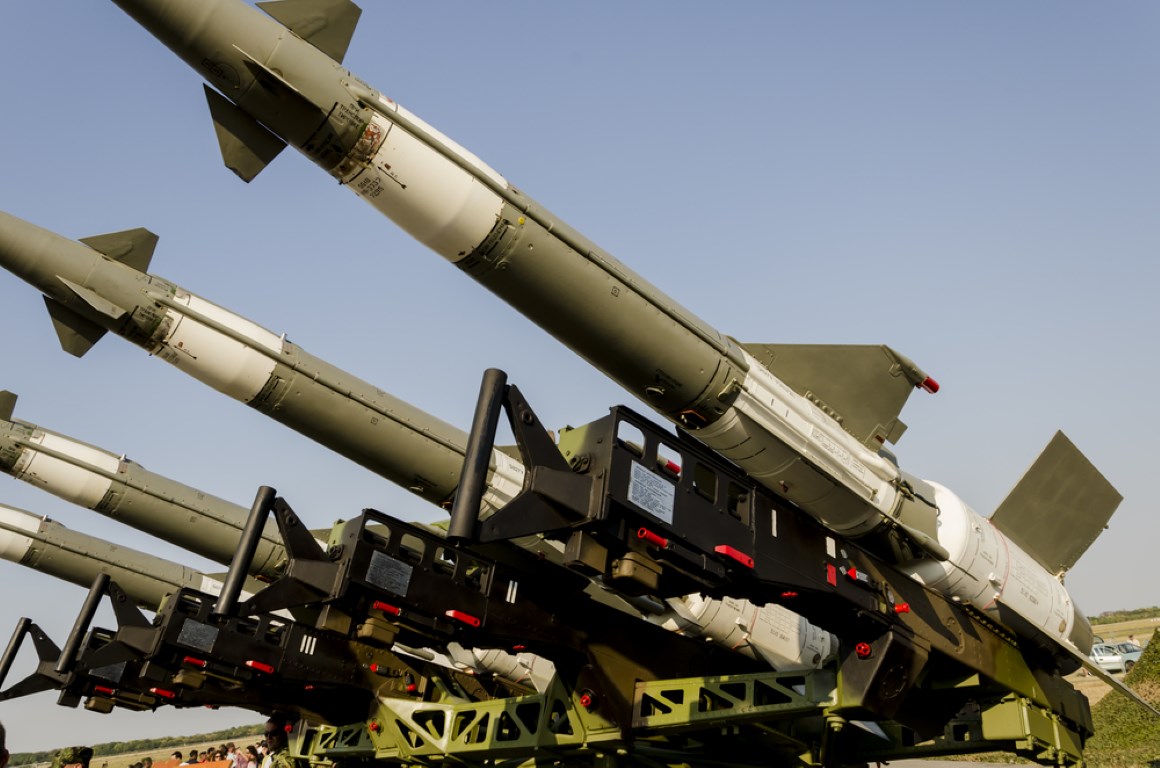China ups the nuclear ante
May 29, 2018 | Expert Insights

China is aggressively developing its next generation of nuclear weapons, conducting an average of five tests a month to simulate nuclear blasts, according to a major Chinese weapons research institute.
Background
The Chinese People's Liberation Army (PLA) consists of five professional service branches: the Ground Force, Navy, Air Force, Rocket Force, and the Strategic Support Force. It is the world's largest military force, with a strength of approximately 2,285,000 personnel, 0.18% of the country's population. It is the fastest growing and modernizing military power in the world.
In recent months, reports have emerged of China using pioneering technology to develop powerful arsenal. It is reportedly planning on making use of robots and robotics in an effort to increase its bomb and shell production capacity by threefold. It is also updating its old outdated computer systems aboard nuclear submarines, with artificial intelligence. Reports have also emerged that China is quite possibly testing a hypersonic “rail gun”, the world’s first ship-mounted rail gun. The rail gun is capable of shooting down a satellite and is powerful enough to take down a warship. In 2018, China’s Chengdu J-20, a fifth-generation stealth fighter jet, has officially entered combat service. The jet is part of the nation’s commitment to modernize its military operations.
China’s first nuclear weapons test was in 1964, these tests continued until the mid-90s. Since then, the nation has regulated its Nuclear Weapons policy. A defense white paper published in 2011 mentions the maintenance of a “minimum deterrent” and a no-first-use pledge. The criteria of this “minimum deterrent” is not, however, specified.
Nuclear tensions are currently high, with North Korea’s Kim Jong-Un and US President Trump exchanging fiery rhetoric and alluding to nuclear attacks as recent as January this year. As of 2017, the Arms Control Association has estimated that the United States and Russia have approximately 7000 warheads each. China is 4th in the world with 270, followed by Pakistan and India with 140 and 130, respectively.
Analysis
Chinese researchers are experimenting with a highly radioactive isotope that could be used to dramatically worsen the fallout from a standard atomic weapon. A state-backed physics experiment using a rare metal could help China’s military develop highly radioactive “salted” nuclear bombs that can lay waste to vast areas for months, according to nuclear scientists.
The Chinese Academy of Sciences announced over the weekend that scientists at a heavy ion research facility in Lanzhou in northwestern Gansu province had fired superheated beams of a radioactive isotope of tantalum, a heavy metal that can be added to a nuclear warhead to increase the release of radioactive fallout. The academy said scientists accelerated the ionized atoms of tantalum 181 to record levels repeatedly as part of an experiment for some military engineering projects to “meet a critical strategic demand of China’s national defense”.
The creation of a high-quality, high-output tantalum beam had long been a challenge because the metal’s unusually high melting point of nearly 3,000 degrees Celsius. It was difficult to isolate the element and generate a particle stream big enough for experimental use. Tantalum was also nearly as heavy as gold and highly advanced magnetic technology was needed to propel the ions to high speeds and control their movement.
Between September 2014 and last December, China carried out around 200 laboratory experiments to simulate the extreme physics of a nuclear blast, the China Academy of Engineering Physics reported in a document released by the government earlier this year and reviewed by the South China Morning Post this month. In comparison, the US carried out only 50 such tests between 2012 and 2017 – or about 10 a year – according to the Lawrence Livermore National Laboratory.
Pentagon officials have said the US wants its enemies to believe it might actually use its new-generation weapons, such as smaller, smarter tactical warheads designed to limit damage by destroying only specific targets.
Although an international ban prevents nuclear weapons from being tested with exceptions like North Korea, the major nuclear powers have been able to continue conducting simulated tests. Such tests are typically carried out using high-powered gas guns that fire projectiles at weapons-grade materials in laboratories. They are also known as the graded impactor.
Researchers have used supercomputers to draw on historic data derived from live nuclear tests performed prior to 1990, before the international ban was imposed. Emerging technologies like hypersonic vehicles and artificial intelligence have opened the door for the development of new nuclear weapons that could be smaller in size and more precise.
The Russian government under Vladimir Putin has in recent years revealed a series of new nuclear weapon programs, including smaller weapons, as well as a super torpedo capable of wiping out coastal cities.
Counterpoint
China’s large number of simulated tests does not mean it is ahead of the US in nuclear weapons development, according to Professor Wang Chuanbin, from the State Key Laboratory of Advanced Technology for Materials Synthesis and Processing at the Wuhan University of Technology. The US has detonated more than 1,000 nuclear warheads since 1945. In contrast, China has carried out only 45 live tests starting from 1964.
Assessment
Our assessment is that as China joins the US and Russia in pursuing more targeted nuclear weapons as a deterrent against potential threats, the arms race would in fact serve a contrarian purpose by increasing the risk of a nuclear conflict.








Comments